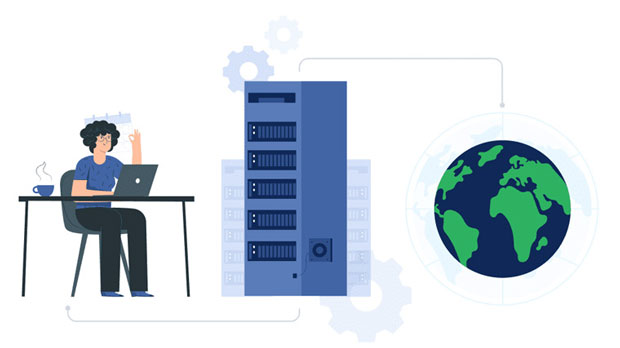In enterprise-level web scraping, proxies play a crucial role in ensuring smooth, secure, and efficient data retrieval. Two commonly used proxy tools are PYPROXY and Crossy Proxy. Although both serve the same primary function of providing anonymity and security for web scraping tasks, they differ significantly in their underlying architecture, features, and application scope. This article aims to analyze and compare the differences between PyProxy and Crossy Proxy, shedding light on their distinct advantages, use cases, and best practices for enterprise-level web crawlers. The following sections will explore their features in detail, allowing enterprises to make informed decisions based on their specific needs. 1. Overview of Proxy Tools in Web ScrapingIn the context of web scraping, proxies act as intermediaries between the user's requests and the web server, masking the real IP address of the scraper. This helps avoid rate-limiting, CAPTCHA challenges, and IP bans, ensuring uninterrupted access to target websites. Both PyProxy and Crossy Proxy are tools designed to address the challenges of enterprise-level web crawling. However, they cater to different operational needs and provide unique solutions to common scraping issues.2. PyProxy: Features and FunctionalityPyProxy is a Python-based proxy management tool known for its simplicity, flexibility, and ease of integration into custom scraping projects. It is designed for developers who prefer a lightweight, scriptable approach to proxy handling. Key features of PyProxy include:2.1 Lightweight Design and FlexibilityPyProxy offers a minimalistic design, making it an attractive choice for developers who want to have full control over the proxy management process. Its open-source nature allows for customization, making it suitable for tailored scraping workflows. PyProxy integrates seamlessly with existing Python-based scraping frameworks, such as Scrapy or BeautifulSoup, providing ease of use without the need for complex configurations.2.2 Proxy Pooling and RotationOne of the standout features of PyProxy is its ability to manage a pool of proxies. This proxy pool can be configured to rotate proxies automatically, reducing the risk of IP bans and enhancing the success rate of scraping tasks. The proxy rotation mechanism is customizable, allowing for the adjustment of request frequency and other parameters based on the target website’s anti-scraping measures.2.3 Performance and SpeedPyProxy’s performance is heavily dependent on the proxy pool configuration and the scraping speed requirements. Since it is a lightweight tool, it can handle moderate scraping tasks efficiently. However, for large-scale scraping operations requiring high concurrency and reliability, PyProxy might face limitations in terms of speed and robustness.3. Crossy Proxy: Features and FunctionalityCrossy Proxy is a more advanced proxy management tool, designed with scalability and enterprise-level requirements in mind. Unlike PyProxy, Crossy Proxy offers a more feature-rich experience with additional functionalities that suit high-demand web scraping environments. Key features of Crossy Proxy include:3.1 Scalability and RobustnessCrossy Proxy is designed to handle large-scale scraping operations, offering higher reliability and scalability compared to PyProxy. It is built to support high concurrency and massive proxy pools, making it ideal for enterprises involved in complex scraping tasks that require robust proxy management and support for thousands of simultaneous connections.3.2 Advanced Proxy Rotation and Session ManagementWhile PyProxy offers basic proxy rotation, Crossy Proxy goes a step further by providing advanced session management capabilities. This includes sticky sessions, which ensure that a single proxy is used throughout the session, reducing the chances of being detected by anti-scraping mechanisms that track session consistency. Additionally, Crossy Proxy provides advanced algorithms for proxy rotation, making it harder for target websites to block or throttle requests.3.3 Proxy Performance OptimizationCrossy Proxy includes built-in performance optimization features, such as latency measurement and auto-fallback mechanisms. These ensure that the proxy pool is always optimized for performance, with low-latency proxies being prioritized. In addition, Crossy Proxy is capable of automatically replacing low-performing proxies with better ones, ensuring continuous and efficient scraping operations.4. Comparison of PyProxy and Crossy Proxy4.1 Ease of UsePyProxy is well-suited for developers looking for a simple, lightweight solution. Its straightforward setup and integration with Python-based scraping frameworks make it an attractive choice for smaller projects or internal use. Crossy Proxy, on the other hand, offers more advanced features, but may require a steeper learning curve for new users. It is more suitable for enterprises with complex scraping requirements and higher technical expertise.4.2 Scalability and PerformanceWhen it comes to scalability, Crossy Proxy outperforms PyProxy. Crossy Proxy can handle large volumes of traffic, manage more extensive proxy pools, and ensure high performance even under heavy loads. PyProxy, while capable of handling moderate tasks, may face performance bottlenecks when dealing with larger-scale scraping operations.4.3 Security and AnonymityBoth tools ensure anonymity and security through proxy rotation and session management. However, Crossy Proxy offers enhanced security features, including IP fingerprinting protection and more advanced session management, which provides better resilience against anti-scraping techniques. PyProxy is more basic in this regard, offering essential features but lacking the advanced security options available in Crossy Proxy.4.4 Cost and Resource RequirementsPyProxy’s lightweight nature means it requires fewer resources to run and is less expensive to maintain. It is an excellent option for small to medium-sized enterprises with limited resources. Crossy Proxy, on the other hand, requires more computing power and resources, which may make it a costlier choice for enterprises. However, its advanced features and scalability justify the higher costs for larger, more demanding scraping operations.5. Use Cases and Best Practices5.1 When to Use PyProxyPyProxy is ideal for smaller enterprises or individual developers who need a simple and cost-effective proxy management solution. It is well-suited for smaller scraping tasks where advanced features like session management or proxy optimization are not necessary. It’s also a good option for projects that require a high level of customization and flexibility.5.2 When to Use Crossy ProxyEnterprises with large-scale, high-concurrency scraping requirements should opt for Crossy Proxy. It is the go-to solution for organizations that need a robust and scalable proxy management system. Crossy Proxy is ideal for complex scraping projects that involve high volumes of data and require advanced features such as sticky sessions, optimized proxy performance, and sophisticated anti-blocking measures.In summary, both PyProxy and Crossy Proxy offer valuable solutions for enterprise-level web scraping. PyProxy is best suited for smaller, simpler scraping tasks that require flexibility and customization, while Crossy Proxy is the preferred choice for larger-scale operations that demand reliability, scalability, and advanced features. The decision between the two will depend on the specific needs of the enterprise, including factors such as the complexity of the scraping tasks, available resources, and required performance levels.
Sep 02, 2025



































































